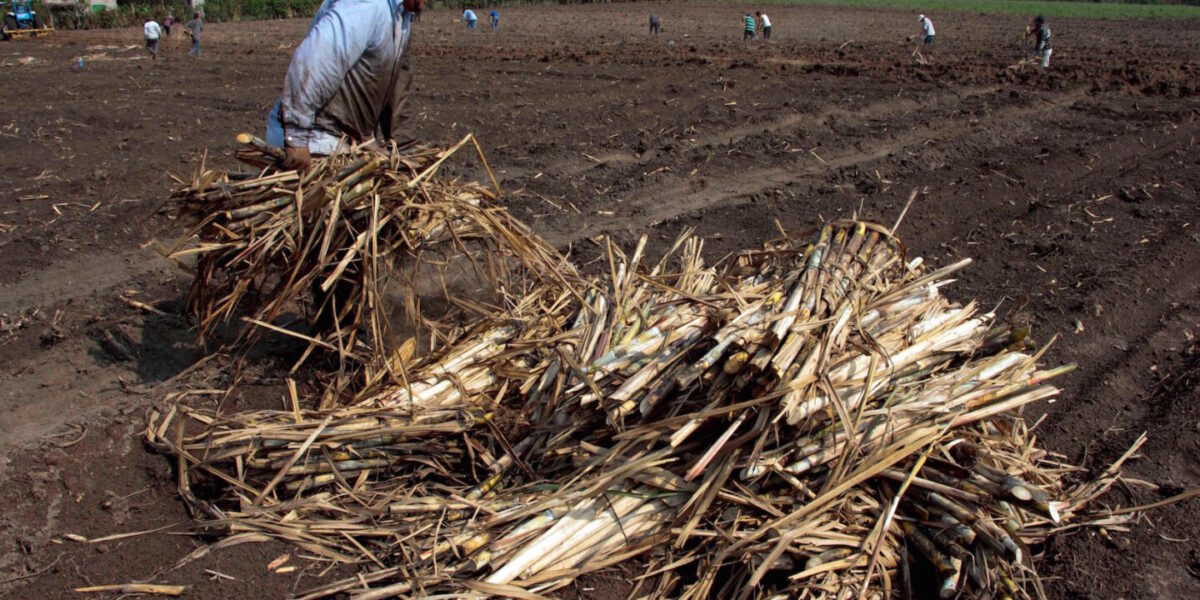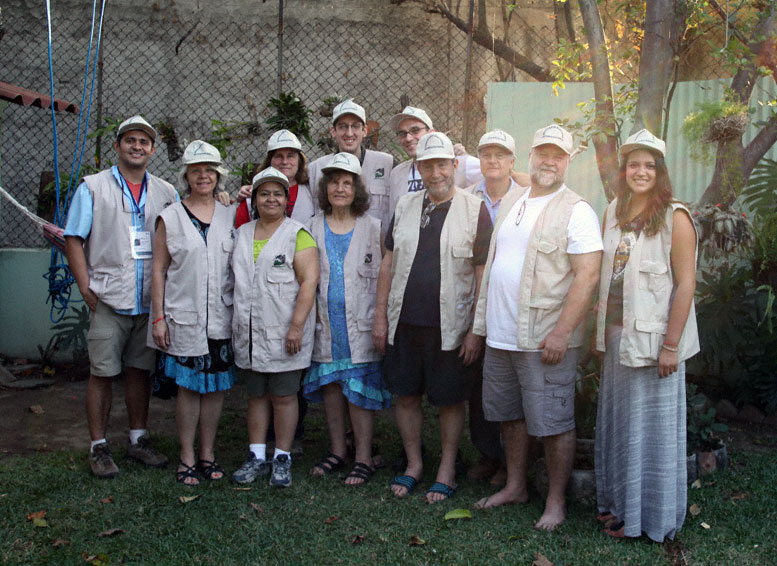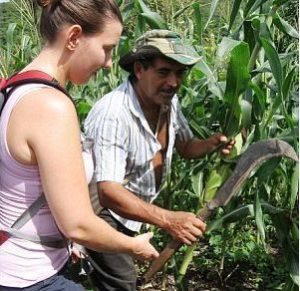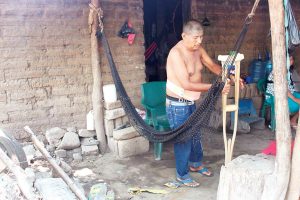Delegations, Human Rights
Bittersweet Sugarcane, Nisha Arya’s Delegation Reflection
By Nisha Arya
Armed with shovels and hammers, bandanas and water bottles, we trudge to the work site in a small village called Las Anonas in central El Salvador. We are eager to show our willingness to work and help build latrines. The honest truth is that I know absolutely nothing about latrines. I have never done manual labor, I hardly speak any Spanish, and I am already hot and sweaty in the early morning sun. At the construction site, Lance, our team’s MIT trained architect, is conversing easily with Blas, the local mason, through a translator. Being the unskilled worker that I am, I offer to carry the heavy stone bricks. Blas teaches me how to lay mortar evenly on the building’s foundation. I watch in awe as a little boy named Jesús expertly helps me fill in the joints between bricks at the worksite. Despite the gloves, my nails are crusted with dirt and my back aches from crouching all day. At the end of the day, I am tired, hot and hungry.
Back in the village, a cold-water bath in the pila awaits us. Refreshed, we head to the community center for lunch. We Americans are a curiosity. My friend’s blonde hair is drawing attention. A little girl approaches and plays with it, fascinated. After our meal, we meet Maura. Her eyes stare off into the distant sugar cane fields as she tells us about her three children who were kidnapped during the civil war. Several years later, she found two of them. Their names had been changed, and the older child barely recognized her own mother, the younger one not at all. She tells us that she is still looking for her third child. Her voice is dry and cracked, and I feel a lump in my throat. I find out that the real name of this village is Las Anonas de Santa Cruz (of Santa Cruz). This village is a community of refugees, the home of the people who had fled the mountain village of Santa Cruz during the civil war.
The next day, before heading to work, I cut my nails really short and wear socks with my flip-flops as protection from dirt and ant bites. On the way, we see little children dressed in clean, neat uniforms headed to school. After work, we play a sweaty, intense game of soccer with the village girls while the boys watch. Back at the community center, we play with kids, hand out gifts of colored pencils and toys and listen to a very lengthy, untranslated speech by the mayor of the Tecoluca municipality. We learn that the sugar cane fields planted by large corporations have replaced native crops. In a couple of years, the fields of Las Anonas will be burned down and the soil will become unusable. We see fisheries, where tilapias struggle to survive in the water contaminated with chemical fertilizers that run off from the fields. But the local people take us away from the looming troubles, and back to the fiesta, where there is music and laughter and joy.
Frequently, the name Oscar Romero pops up. Murals of Archbishop Oscar Romero are everywhere: on the wall of the community center, in the largest church of San Salvador, on the sides of shacks with tin roofs reflecting the sun. Oscar Romero was the Savior of El Salvador. He was a man of peace who symbolizes the fight of a people against a cruel and unrelenting regime.
When I came to El Salvador, I thought I would see a broken and wounded people, a country traumatized by a bloody civil war and overrun by gangs. Instead I saw people fighting to rebuild their lives and their community. I had gone to Las Anonas to help build latrines for a less fortunate village. However, the strength and determination of the El Salvadoran people taught me the meaning of hope, courage and faith. And when stepping off of the plane in Philadelphia, I realized I received more than I gave.




